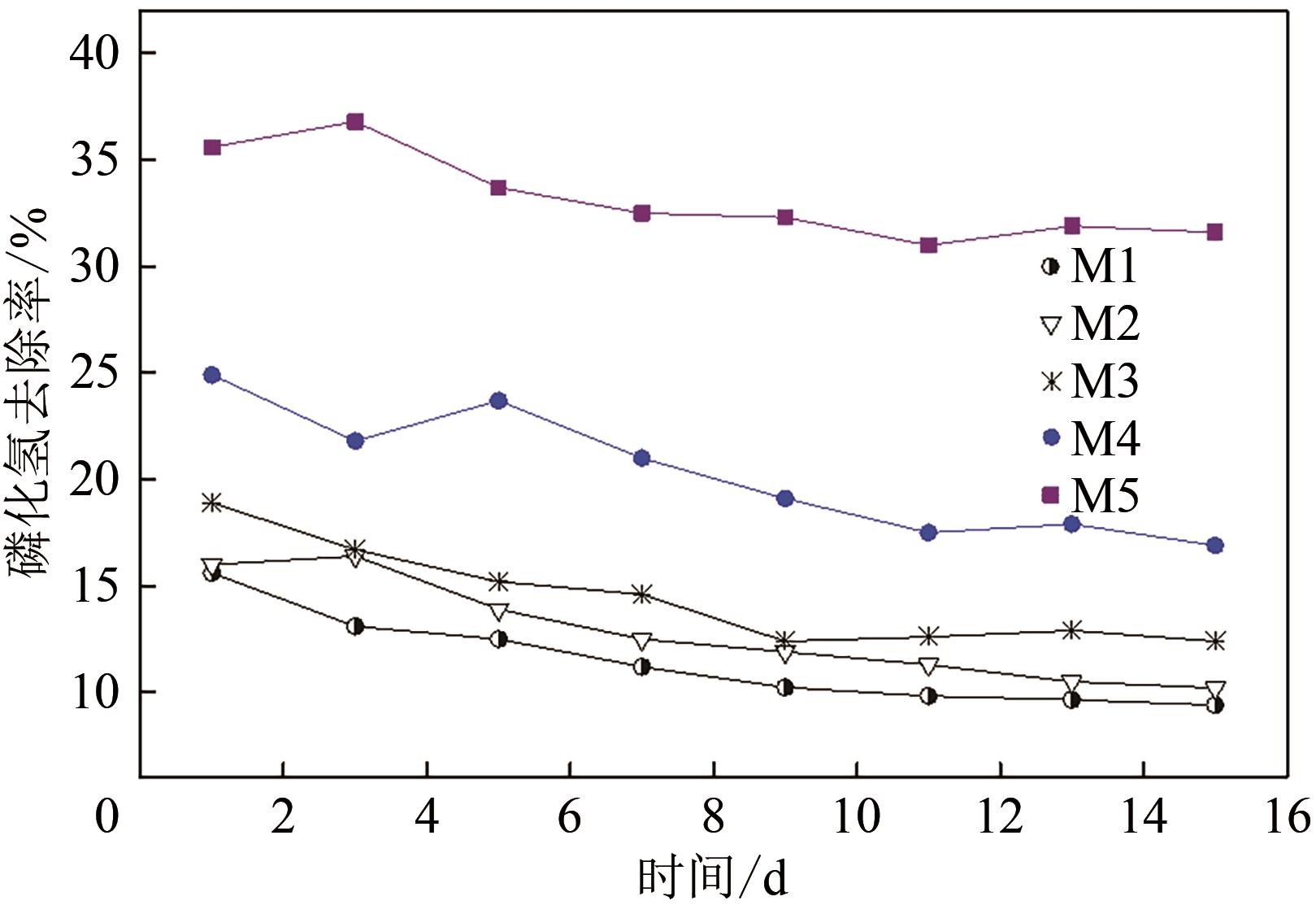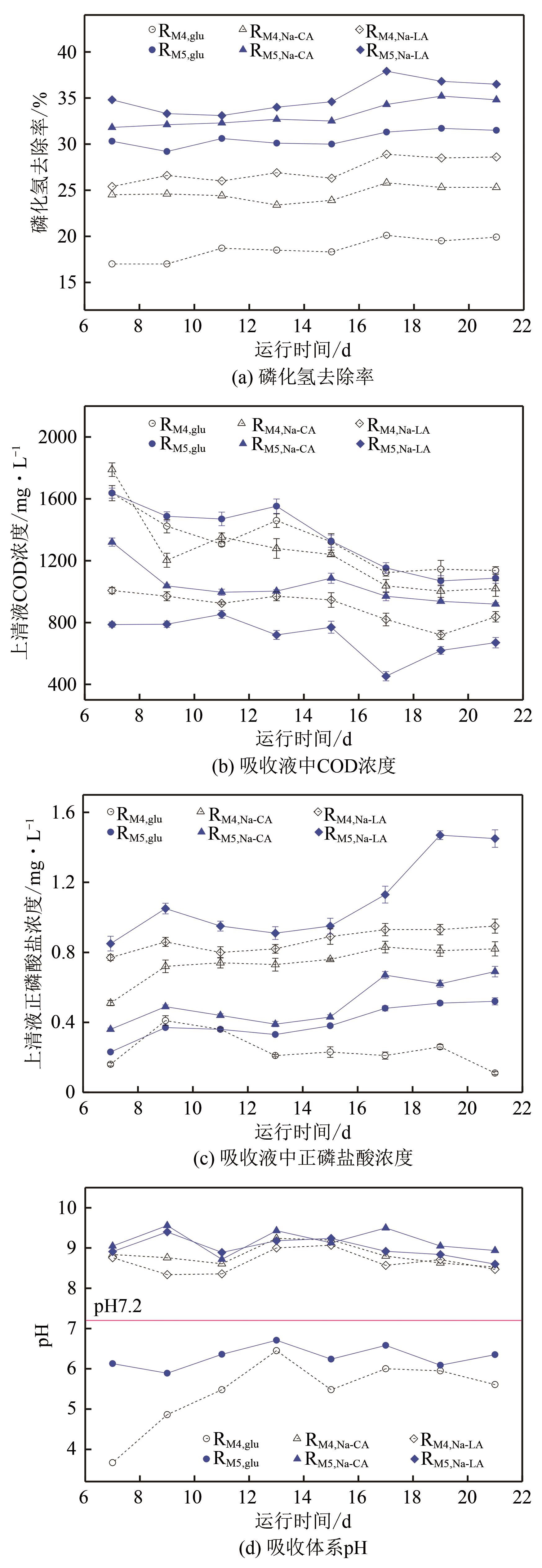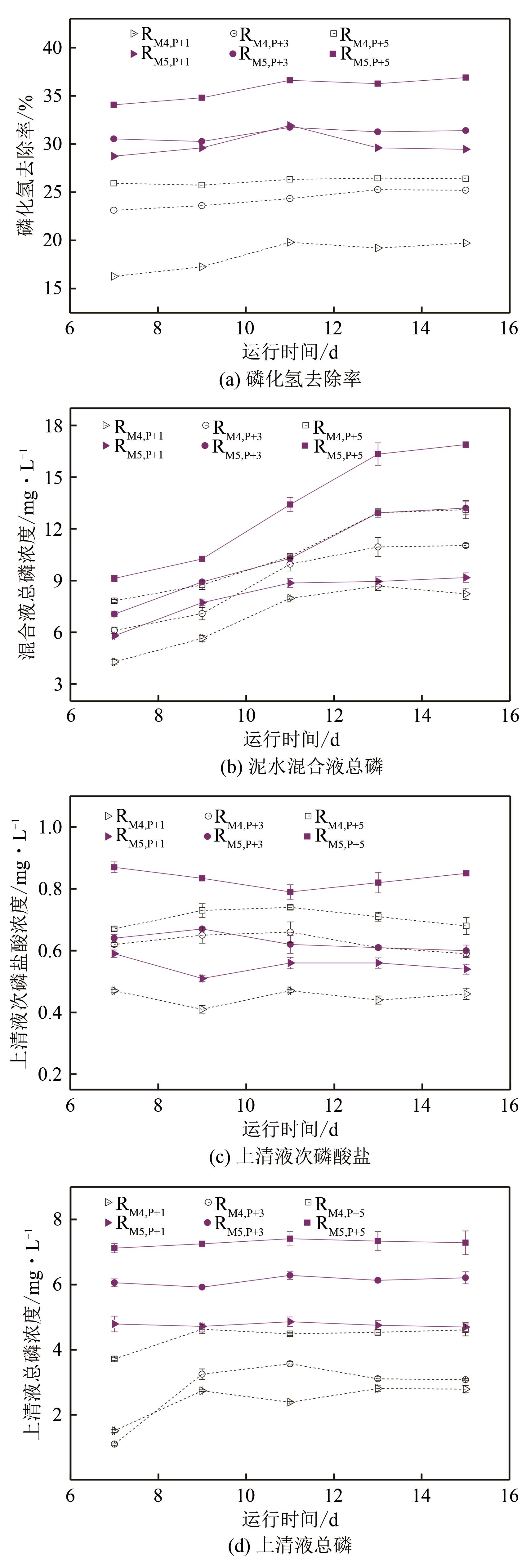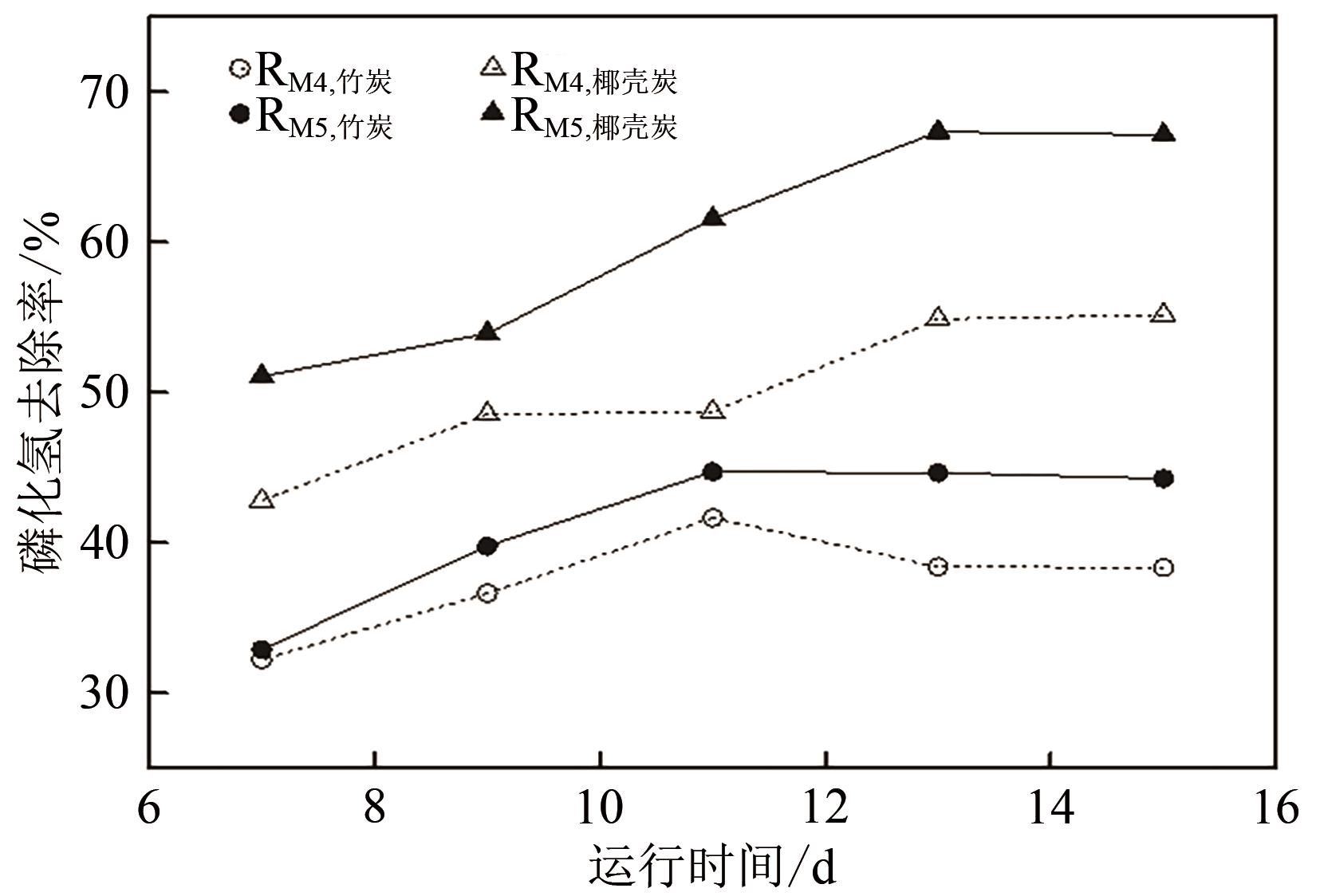| 1 |
CHEN W Y, NIU X J, AN S R, et al. Emission and distribution of phosphine in paddy fields and its relationship with greenhouse gases[J]. Science of the Total Environment, 2017, 599/600: 952-959.
|
| 2 |
SONG X X, MORRISON R J, FENG Z H, et al. Matrix-bound phosphine in sediments from Lake Illawarra, New South Wales, Australia[J]. Marine Pollution Bulletin, 2011, 62(8): 1744-1750.
|
| 3 |
宁平, 易玉敏, 瞿广飞, 等. PdCl2-CuCl2液相催化氧化净化黄磷尾气中PH3[J]. 中南大学学报(自然科学版), 2009, 40(2): 340-345.
|
|
NING Ping, YI Yumin, QU Guangfei, et al. Catalytic oxidation PH3 in yellow phosphoric tail gas with PdCl2 and CuCl2 solution[J]. Journal of Central South University (Science and Technology), 2009, 40(2): 340-345.
|
| 4 |
李山, 郝吉明, 李凯, 等. 粗乙炔中H2S、PH3同时脱除技术研究进展[J]. 化工进展, 2015, 34(2): 534-541.
|
|
LI Shan, HAO Jiming, LI Kai, et al. Progress of simultaneous removal of hydrogen sulfide and phosphine from crude acetylene[J]. Chemical Industry and Engineering Progress, 2015, 34(2): 534-541.
|
| 5 |
汪丽军, 刘涛, 董书军, 等. 磷化氢熏蒸对桔小实蝇氧化代谢体系的影响研究[J]. 中国农学通报, 2013, 29(33): 351-357.
|
|
WANG Lijun, LIU Tao, DONG Shujun, et al. The effect of phosphine fumigation on oxidative metabolism of bactrocera dorsalis hendel[J]. Chinese Agricultural Science Bulletin, 2013, 29(33): 351-357.
|
| 6 |
QU G F, ZHAO Q, JIAN R L, et al. Mechanism of PH3 absorption by Cu+-ILs/H2O two-liquid phase system[J]. Separation and Purification Technology, 2017, 187: 255-263.
|
| 7 |
刘树根, 李婷, 宁平, 等. 环境中磷化氢的产生、分布及转化研究进展[J]. 化工进展, 2019, 38(2): 1085-1096.
|
|
LIU Shugen, LI Ting, NING Ping, et al. Research progress of the release, distribution and transformation of phosphine in environment[J]. Chemical Industry and Engineering Progress, 2019, 38(2): 1085-1096.
|
| 8 |
余琼粉, 易红宏, 唐晓龙, 等. 磷化氢在活性炭上的吸附及吸附等温线的预测[J]. 武汉理工大学学报, 2010, 32(1): 34-37.
|
|
YU Qiongfen, YI Honghong, TANG Xiaolong, et al. Adsorption and prediction of adsorption isotherm onto activated carbon[J]. Journal of Wuhan University of Technology, 2010, 32(1): 34-37.
|
| 9 |
张文俊, 崔鹏, 姚路路. 化学吸附法净化PH3气体的研究[J]. 合肥工业大学学报(自然科学版), 2013, 36(3): 352-356.
|
|
ZHANG Wenjun, CUI Peng, YAO Lulu. Purification of PH3 by chemical adsorption method[J]. Journal of Hefei University of Technology (Natural Science), 2013, 36(3): 352-356.
|
| 10 |
SUN Y Q, XU K, ZHAO Z H, et al. Strongly coupled dual zerovalent nonmetal doped nickel phosphide nanoparticles/N, B-graphene hybrid for pH-universal hydrogen evolution catalysis[J]. Applied Catalysis B: Environmental, 2020, 278: 119284.
|
| 11 |
肖瑢, 刘树根, 杨希, 等. 活性污泥体系中磷化氢生物降解特性[J]. 环境工程学报, 2018, 12(3): 855-862.
|
|
XIAO Rong, LIU Shugen, YANG Xi, et al. Biodegradation characteristics of phosphine in activated sludge system[J]. Chinese Journal of Environmental Engineering, 2018, 12(3): 855-862.
|
| 12 |
刘树根, 肖瑢, 王群超, 等. 一种生物法净化磷化氢尾气的技术方法: ZL201610830521.9[P]. 2019-01-04.
|
|
LIU S G, XIAO R, WANG Q C, et al. A biological method for purifying phosphine tail gas: ZL201610830521.9[P]. 2019-01-04.
|
| 13 |
付梅. 磷化氢对海洋微藻的影响及作用机制研究[D]. 青岛: 中国科学院海洋研究所, 2013.
|
|
FU Mei. The effect and mechanism of phosphine on marine algae[D]. Qingdao: The Institute of Oceanology, Chinese Academy of Sciences, 2013.
|
| 14 |
李丽, 牛晓君, 陆美青, 等. 环境中磷化氢对水稻根际环境与土壤有效磷的影响研究[J]. 环境科学学报, 2015, 35(6): 1851-1857.
|
|
LI Li, NIU Xiaojun, LU Meiqing, et al. Effect of phosphine in the environment on rice rhizosphere and available phosphorus in soil[J]. Acta Scientiae Circumstantiae, 2015, 35(6): 1851-1857.
|
| 15 |
LI T, LIU S G, YAO X F. Addition of reactive oxygen scavenger to enhance PH3 biopurification: process and mechanism[J]. Process Safety and Environmental Protection, 2020, 142: 118-125.
|
| 16 |
国家环境保护总局. 水和废水监测分析方法[M]. 4版. 北京: 中国环境科学出版社, 2002.
|
|
State Environmental Protection Administration. Water and wastewater monitoring and analysis methods[M]. 4th ed. Beijing: Environmental Science Press, 2002.
|
| 17 |
YIN H, SHENG C P, CHEN Z R, et al. Mass transfer reaction kinetics of β-isophorone oxidation by air in an agitator bubbling reactor[J]. Chemical Engineering & Technology, 2014, 37(10): 1797-1804.
|
| 18 |
CUSHING B L, KOLESNICHENKO V L, O’CONNOR C J. Recent advances in the liquid-phase syntheses of inorganic nanoparticles[J]. Chemical Reviews, 2004, 104(9): 3893-3946.
|
| 19 |
王昀璐, 花日茂, 唐欣昀. 寡养单胞菌在环境保护中的应用研究进展[J]. 安徽农业科学, 2010, 38(28): 15796-15797, 15800.
|
|
WANG Yunlu, HUA Rimao, TANG Xinyun. Application of stenotrophomonas in environmental protection[J]. Journal of Anhui Agricultural Sciences, 2010, 38(28): 15796-15797, 15800.
|
| 20 |
杨慧芬, 唐琼瑶, 李甜, 等. 寡养单胞属菌株USTB-2对赤铁矿的捕收效果及机理[J]. 东北大学学报(自然科学版), 2014, 35(7): 1042-1046.
|
|
YANG Huifen, TANG Qiongyao, LI Tian, et al. Effect and mechanism of stenotrophomonas strain USTB-2 as collector for hematite[J]. Journal of Northeastern University (Natural Science), 2014, 35(7): 1042-1046.
|
| 21 |
张伟, 邱慧玲, 陈甫. 鸡源戊糖片球菌和屎肠球菌对氨处理效果的研究[J]. 中国家禽, 2018, 40(6): 34-37.
|
|
ZHANG Wei, QIU Huiling, CHEN Fu. Effect of pediococcus pentosaceus and enterococcus faecium isolated from chicken on ammonia treatment[J]. China Poultry, 2018, 40(6): 34-37.
|
| 22 |
周群英, 王士芬. 环境工程微生物学[M]. 4版. 北京: 高等教育出版社, 2015.
|
|
ZHOU Qunying, WANG Shifen. Microbiology of environmental engineering[M]. 4th ed. Beijing: Higher Education Press, 2015.
|
| 23 |
ROELS J, VERSTRAETE W. Biological formation of volatile phosphorus compounds[J]. Bioresource Technology, 2001, 79(3): 243-250.
|
| 24 |
李江, 李晓明, 吴炜亮, 等. 次磷酸钠的急性毒性研究[J]. 生物技术世界, 2013, 10(1): 77, 79.
|
|
LI Jiang, LI Xiaoming, WU Weiliang, et al. Acute toxicity of sodium hypophosphite[J]. Biotech World, 2013, 10(1): 77, 79.
|
| 25 |
李宝玉, 高明杰, 高春雨, 等. 亚磷酸盐在农业上的应用及机制研究进展[J]. 南京农业大学学报, 2017, 40(6): 949-956.
|
|
LI Baoyu, GAO Mingjie, GAO Chunyu, et al. Research advances in application and mechanism of phosphites in agriculture[J]. Journal of Nanjing Agricultural University, 2017, 40(6): 949-956.
|
| 26 |
余桂珍, 袁航, 罗著, 等. 一种基于亚磷酸盐及其脱氢酶的植物磷利用和杂草控制系统的建立[J]. 生物工程学报, 2019, 35(2): 327-336.
|
|
YU Guizhen, YUAN Hang, LUO Zhu, et al. Establishment of a plant phosphorus utilization and weed control system based on phosphite and its dehydrogenase[J]. Chinese Journal of Biotechnology, 2019, 35(2): 327-336.
|
| 27 |
陈凤婷, 曾汉民. 几种植物基活性炭材料的孔结构与吸附性能比较——(Ⅰ)孔结构表征[J]. 离子交换与吸附, 2004, 20(2): 104-112.
|
|
CHEN Fengting, ZENG Hanmin. Comparison on pore structure and adsorption properties of several types of plant-based carbonaceous adsorbents—(Ⅰ) Characterization of pore structure[J]. Ion Exchange and Adsorption, 2004, 20(2): 104-112.
|
 ), REN Lin, SU Fujia, DONG Zhanneng(
), REN Lin, SU Fujia, DONG Zhanneng( )
)





